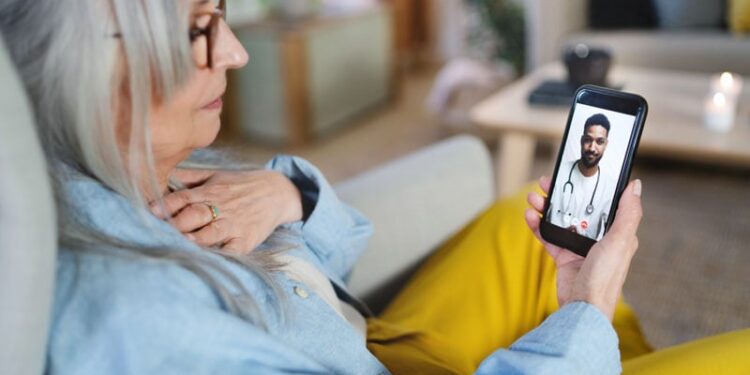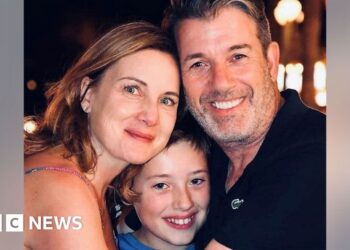A network of virtual services in British Columbia (BC) is increasing healthcare access and support in rural, remote, and First Nations communities, a new analysis revealed.
But more needs to be done to fully bridge healthcare gaps.
The Real-Time Virtual Support (RTVS) network is an integrated, hybrid-care model that delivers publicly funded virtual care. Staffed by BC-licensed providers, RTVS builds capacity to enhance — rather than replace — existing healthcare infrastructure. The network offers both direct patient care and clinical decision support for community health professionals. A shared electronic record documents all care activities, with structured communication protocols connecting primary and emergency care providers.

“Virtual care boomed at the onset of the COVID-19 pandemic. Yet there has been so far a lack of definitive evidence in the literature as to whether virtual care truly improves access, efficacy, safety, and cost effectiveness for patients and the health system,” lead author, Kendall Ho, MD, told Medscape Medical News.
Ho said he hopes his recent article, published online on July 28 in the Canadian Medical Association Journal, will contribute positive evidence of virtual care and how he and his team approach its coordinated delivery, encouraging further knowledge exchange between provinces and other virtual care programs.
Ho is a professor of emergency medicine at faculty of medicine, The University of British Columbia, Vancouver, and medical director of the BC Ministry of Health’s HealthLink BC 8-1-1 virtual physicians program.
Addressing Healthcare Gaps
“With the right partnerships and coordination, virtual services can actually enhance and increase capacity for in-person services,” Ho noted. For example, the network’s peer-to-peer services partner with rural providers to help maintain care services and to offer access to more specialized services in the community when needed.
“Our virtual, direct patient services help patients appropriately manage health concerns at home when emergency visits are not necessary and accelerate those needing urgent treatments to go to emergency rooms, thereby relieving pressure on our emergency service,” he added.
Nurses triage 8-1-1 callers using the Healthwise algorithm and their clinical judgment to a visit with a virtual physician — who provides assessment and advice via telephone or video conferencing — or to in-person primary or emergency care.
Since its founding in 2020, RTVS has had more than 20,000 encounters with peer-to-peer services in 129 rural, remote, and Indigenous communities; 12,000 appointments annually with First Nations primary and specialist services; and 176,000 patient calls to the 8-1-1 virtual physician service, the authors reported.
The urgent generalist service, Rural Urgent Doctor In-aid, mainly has supported
nurses at rural health centers (76% of encounters), according to the authors. Pediatric peer support (ie, Child Health Advice in Real-Time Electronically) was sought more often by physicians (78%), whereas obstetric peer support (ie, Maternity and Babies Advice Line) was almost evenly split between physicians and nurses.
The First Nations primary and specialist services, respectively, generally provide 11,000 and 2000 encounters annually, with clients primarily from the Northern, Interior, and Vancouver Island regions. In addition, clients have about 3-4 visits lasting 30-40 minutes annually, suggesting that these Indigenous-led services address an important healthcare gap for First Nations clients in BC.
However, the authors wrote, “evidence is limited, and Indigenous-led evaluation will be prioritized to share learnings from these pathways.”
The authors also noted a potential “harm” with RTVS — namely a deepening of the “digital divide”, as individuals who have digital access and skills may be offered better services, thereby marginalizing those without access.
“We envision a new normal when virtual care will be tightly integrated with in-person care for complementarity, and that conventionally underserved populations — in particular, rural, remote, First Nations, and Indigenous populations — will be able to access the care they need just in time, just for them, and with just-in-case availability,” Ho concluded.
‘Rural Care Is Essential’
Shortly before the publication of the CMAJ article and in line with its messages, the Canadian Association of Emergency Physicians (CAEP) released a statement highlighting the need for “smart, sustainable networks of emergency care…especially in rural and remote communities.”
“Rural emergency care is not optional. It is essential,” according to the statement. For that to happen, emergency medicine needs “networks, not silos.”

CAEP Past President Michael Howlett, MD, adjunct associate professor of emergency medicine at Queens University, Kingston, Ontario, and associate professor at Dalhousie University, Halifax, commented on the RTVS article for Medscape Medical News, and its relevance for emergency physicians in BC and other regions.
“RTVS is doing an excellent job with what they’re given,” he said. “The biggest problem is the lack of boots on the ground — the lack of people actually present in person to deal with high-level emergencies.”
“Their service can facilitate patients’ knowing where they need to go or what they need to do next, but they can’t actually lay hands on someone to fix a problem,” he continued. “If you have a broken leg and it needs to be set, you can’t reach through the TV camera and do it. You can’t reach through the screen and take out a foreign body. You can’t do certain types of exams on people. You have to have someone do it.”
“My biggest worry is that when systems like this are successful, governments will see virtual care as fixing the entire capacity problem and miss the point that even though they don’t happen as often, serious, life-threatening problems require a different sort of care than virtual care. They require someone there.”
Often, he said, “We’re doing virtual care because we have no choice not because it’s the best way.”
Clinicians working in small communities also need to be aware that not everything can be delivered virtually, Howlett added. “If you’re going to work in these systems, you have to know the limitations and you have to know what resources you have to give people as alternatives. You also need to know that the system requires advancement and capacity, and we all should be advocating for that.”
No funding was reported. Ho reported leading the Digital Emergency Medicine Unit at The University of British Columbia. The BC Ministry of Health provided funding to Ho’s unit, through an explicit arrangement with The University of British Columbia, for the unit to help organize and implement the BC Ministry of Health 8-1-1 Virtual Physicians line and to evaluate the RTVS network. Howlett reported no relevant financial relationships.
Marilynn Larkin, MA, is an award-winning medical writer and editor whose work has appeared in numerous publications, including Medscape Medical News and its sister publication MDedge, The Lancet (where she was a contributing editor), and Reuters Health.
Source link : https://www.medscape.com/viewarticle/virtual-support-enhances-healthcare-bcs-rural-patients-2025a1000l8m?src=rss
Author :
Publish date : 2025-08-11 12:17:00
Copyright for syndicated content belongs to the linked Source.














